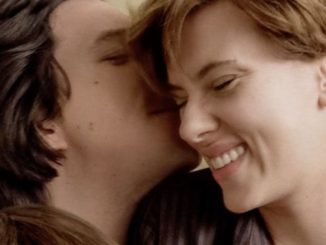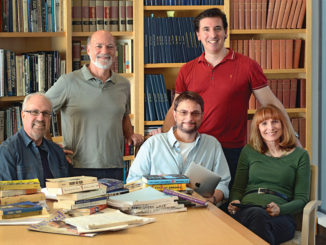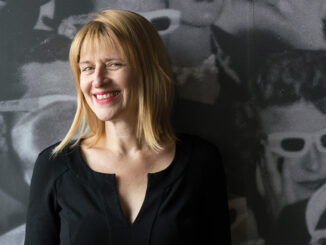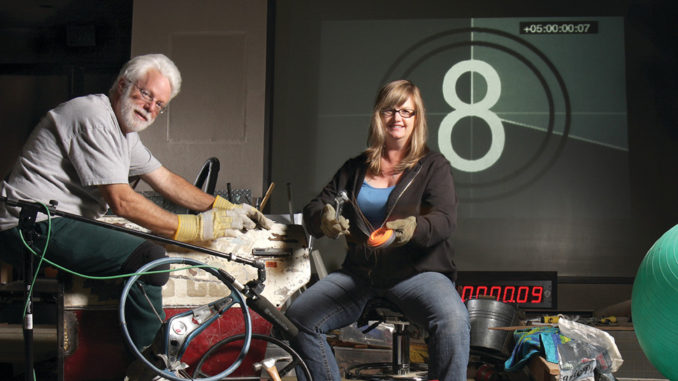
by Michael Kunkes
It was October 1927, and over at Universal Studios, they were sweating bullets. The studio had just completed production on its new silent epic, Show Boat, when Warner Bros. released The Jazz Singer––effectively ending the silent era. Universal, like most studios, realized that its current product had immediately become obsolete, and scrambled to make adjustments.
The studio rented a Fox/Case-Sponable sound-on-film system, which interlocked the picture to the recording apparatus, and on Stage 10 prepared to record a 40-piece orchestra that would add music, along with some dialogue and songs, to what would eventually be a highly successful 1929 release. Off to the side of the stage, a young assistant director named Jack Foley (who also worked on sound for Universal’s first talkie, Melody of Love, 1928) joined other studio employees, performing various sound and vocal effects in what became known as “direct-to-picture” techniques.
The growth of variable-density optical sound formats such as Fox Movietone in the early 1930s allowed sound effects editing to flourish as a dedicated creative process. Soon, editors realized that cutting in footsteps (then called “footfalls”) that were recorded in sync with the projected picture on an as-needed basis, added considerably more drama than the production tracks allowed, especially when manipulated and modulated by a recording mixer seated at a “control desk” (father of the mixing console). Of course, it was only with the later advent of magnetic sound that performances could be rolled back and replayed for approval. In those days, the recorded sound simply went to the lab to be printed onto optical tracks.
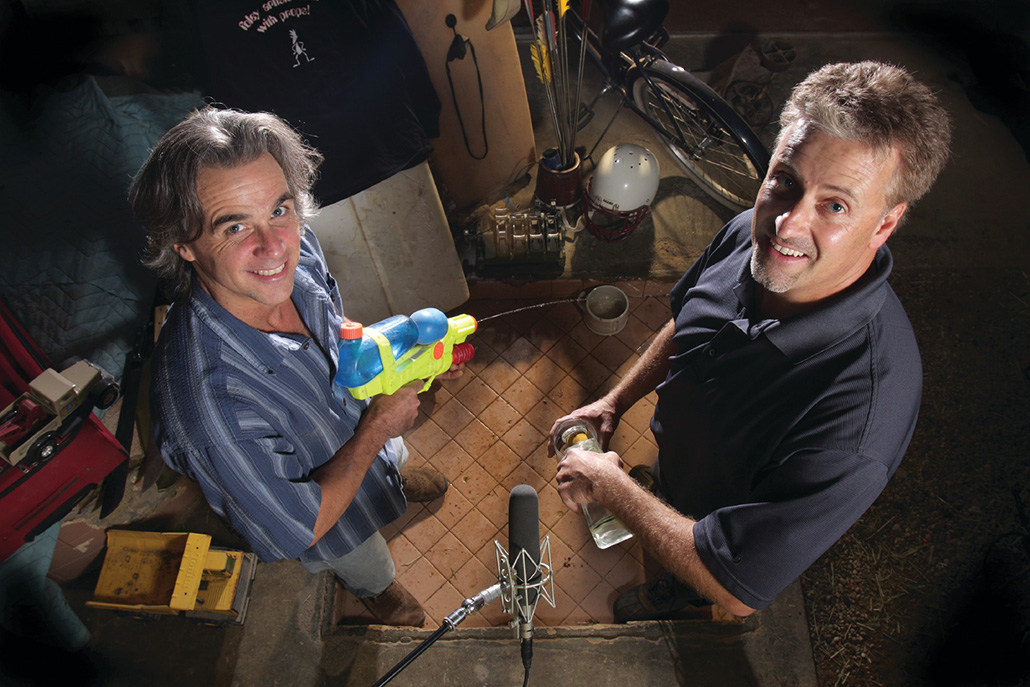
To meet the increasing demand for these effects, Foley, who spent his entire 40-year career at Universal, turned a small sound stage at the studio into a direct-to-picture facility that soon came to be known as “Foley’s room” and later, the Jack Foley Stage. (In the ‘60s, Desilu became the first outside studio to brand its own facility with his name.) It was a name that stuck to the process, the location and the very special group of craftspeople who became, next to the physical actors, perhaps the most important performers in a motion picture.
Today, 41 years after its namesake’s death, Foley is among the last bastions of organic filmmaking––a cinematic art that is still relatively untouched by the digital revolution, and whose true origin belongs more to the Golden Age of radio than to the visual medium it so greatly enhances.
So what is a Foley artist? According to freelancer Shelley Roden, MPSE, who has worked at Technicolor, Paramount, Universal and Soundelux, “A Foley artist must have an instinct for what materials to use to create a specific sound without necessarily being literal about what they choose. For example, if I have to make the sound of an eyeball being torn from its socket, I will think of the different elements––a gooey squish, a pop, the straining of the nerves––so maybe I’ll squish my hand into an oatmeal and egg whites mixture, use my mouth for the pop, and yank on rubber tubing for the straining sound.
“A Foley artist also should have the ability to achieve the delicate balance between intense concentration and the ability to let go during every performance,” Roden continues. “It’s also important to hit sync and to listen to what you are doing during your performance so that you can determine how your sounds will lay into production. It is equally important to collaborate with your partner, mixer and your clients. In the best-case scenario, a Foley artist brings enthusiasm to the job and loves doing it.”
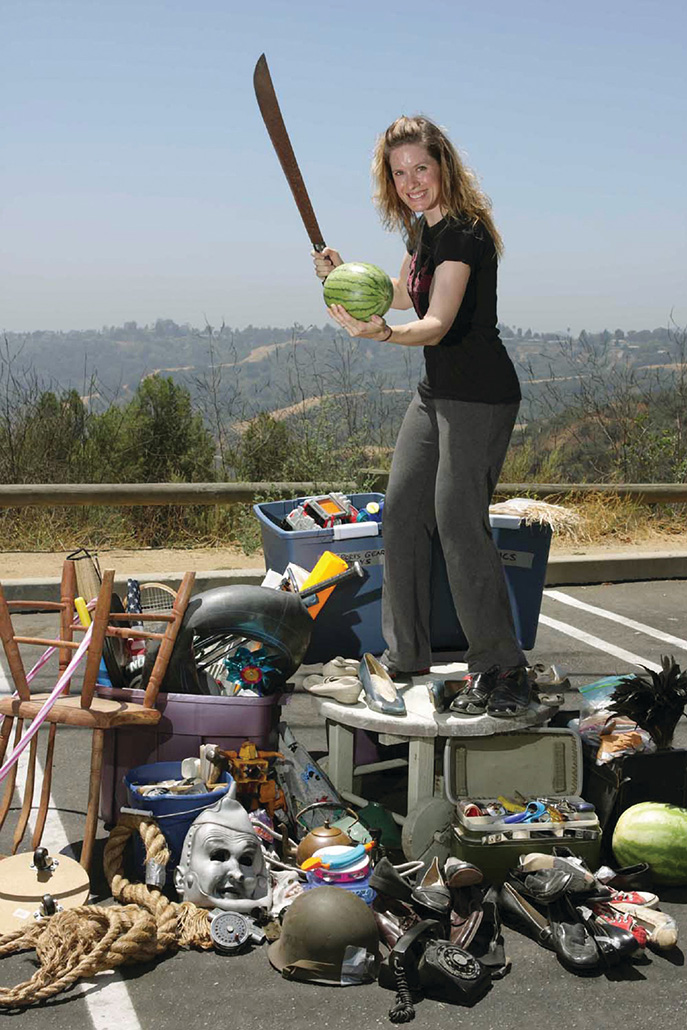
It is a tribute to the level of experience, skill and artistry the job requires that the title “Foley artist” has replaced the limiting “walker” and “stepper” appellations. “It was when we started using more electronic manipulation such as heavy EQ, pitch control and unusual mic techniques that people started to say, ‘You’re not just making footsteps; this is more of an art form,’” says Jeffrey Wilhoit, MPSE, who works with 20-year partner James Moriana, MPSE, and mixer Nerses Gezalyan, CAS, on the Todd-AO Foley Stage in Santa Monica, originally built as part of the Skywalker Sound facility in the mid-1990s. “What we do looks easy to the outsider, but this is the result of many years of experimentation and experience. We move among the worlds of ADR, production sound and sound effects, and that’s a lot of environments to have to work in.”
At Warner Bros., Foley artists Alyson Dee Moore, MPSE and John Roesch, MPSE, along with mixer Mary Jo Hart, have been a team for ten years. Moore’s father was actor/producer Alvy Moore, most famous for playing incompetent county agent Hank Kimball on Green Acres in the mid-1960s. “I even did Foley on an episode of Evening Shade that my father acted in during the 1990s, so you can truly say I followed in my father’s footsteps,” she jokes.
“The routes people take to this career are pretty varied, and each one of us has a unique story,” offers Roesch. “Some were actors or dancers, some were kids of editors, and others, such as myself, took a more serendipitous route.” Roesch was a directing student at both NYU and AFI, and got into Foley when he helped out a friend on a low-budget feature. “I thought it was kind of silly––and I was trying to get into assistant directing. But I kept getting calls, and here I am, 26 years later!”
Both the Warner and Todd-AO facilities are representative Foley stages—every possible permutation of building materials, wood and cement flooring, linoleum, railroad ties, reinforced and unreinforced concrete, metal platforms, a dirt and gravel pit, shallow and deep tubs for surface water work (wave action and/or underwater recording), firearms (non-working), bones, bicycles, glassware, dishes, pots and pans, auto body parts, swords, servo motors, aircraft parts, clay pigeons and, of course, shoes of every permutation. In short, anything bendable, breakable and unbreakable that will create a recordable noise that can be made to sound like something else, including what the script says it’s supposed to sound like. Everything coming into play—shape, geometry, textures, tensility, sync—combined with the movement, creativity and inventive acting ability of the Foley artist—all go into what Moore calls “taking a picture of a sound.”
“A Foley stage needs to be as quiet as possible, which makes it one of the more difficult stages to build,” says Leslie Bloome, MPSE, a New York-based Foley artist who works mainly at the C5 Inc. and Soundtrack New York stages. “You are recording incredibly low-level sounds with a directional microphone. If you breathe or your stomach rumbles during a cue, the mic will pick it up. Soundtrack New York had to close down its Manhattan Foley stage for a year because a high-rise was going up a block and a half away, and C5’s stage is in the middle of nowhere in New Jersey.”
Foley is also a physically demanding job. Wilhoit, who with Moriana just finished several weeks of Foley on The Mummy 3: Tomb of the Dragon Emperor, says, “We had to do a lot of running in place and you have to keep the same perspective and not drift too far from the mic setup,” he explains. “Sometimes, you may just have to go ten feet, cut back and forth between back and front views, then get a chance to rest and adjust the sync. But sometimes there are long cues, and we just have to hunker down and do it without breathing hard.”
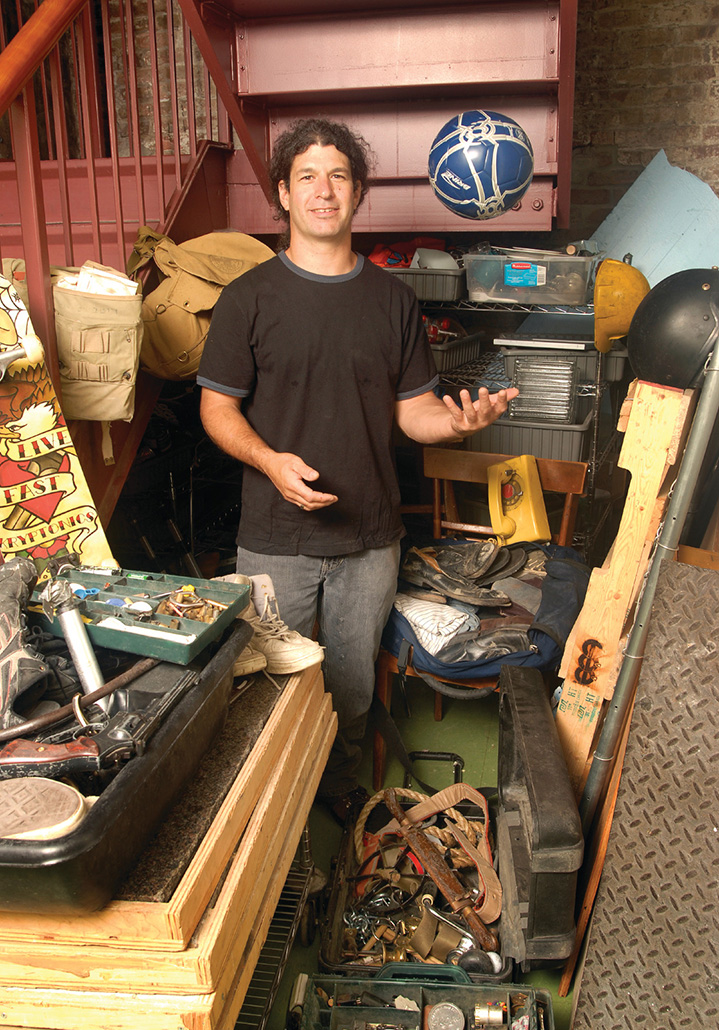
Roden shared a 2008 MPSE Golden Reel Award for Best Sound Editing: Direct to Video for Return to House on Haunted Hill, calling it “the most physical movie I have ever worked on, with numerous body falls, crawling, fighting, slashing and blood splattering.”
Most Foley artists employ a standard two-mic setup, usually one shotgun for direct source recording and a room mic for background/ambient. “For example, if a scene requires someone to walk from the back of an airport hangar up to and stopping in the foreground, Mary Jo will start using the background mic and fade between the two to bring my feet, or John’s, up to a spot where the sound is right in your face,” Moore explains. “When the back- and foregrounds blend together, the sound becomes very natural.”
According to Roesch, the better the relationship with the supervising sound editor who hires them, the more smoothly the job will go. “Every film is unique,” he says, using the team’s current project, David Fincher’s upcoming The Curious Case of Benjamin Button, as an example. “Brad Pitt’s attitude––the way he’s walking, where he walks, the shoes he wears and the effect they create––are things that directors communicate to us through the supervising sound editor. We know what sounds the editors are going for; we know what they will need and what they don’t need. Sometimes, they will bring some cut tracks to the stage and we will do our work against theirs; that’s a good harmony that can only improve the detail.”
Foley’s performance-based nature has defied the attempts of budget-minded producers to turn it into one more generic sound effects library. “A sound editor will go into his library to look for a body fall and come up with 1,200 of them; he won’t have time to go through all that,” Moriana says. “He knows exactly what he needs and he knows we can get it for him right here in five seconds and fine-tune it. It does seem, however, that as budgets have shrunk and schedules have gotten shorter, some old Foley is being utilized as library.”
Roden concurs. “It would take a sound editor much time and effort to build element upon element to create a final sound with the same dimension and qualities that a Foley artist is able to perform in real time. I cannot imagine a sound editor having to cut all the footsteps that I walked for John Travolta’s character in A Love Song for Bobby Long, who limps on one flip-flopped foot and walks normally on the other shoed foot. No matter how much time a sound editor spent crafting the walk sounds to reflect the specific actions––scuff, step, flop, trip!––the end result is not likely to sound as organic as a Foley artist’s performance.”
“Foley is a performance art,” Bloome declares. “A person on the street who just won the lottery and walks five steps from a building to his car is going to walk with a totally different attitude than a person who just ran those same five steps after robbing a bank. Foley is about nuance. Perhaps you could go to a library to find it, but would it be worth it? It’s just so much easier for a Foley artist to shoot a scene than it would be for an editor to cut it. The flip side is that Foley’s expensive; you need at least one artist and mixer, and two rooms: the stage and control room. But any serious feature film is going to need Foley. There’s no way around it, and that’s what keeps our industry going.”
The growth of variable-density optical sound formats such as Fox Movietone in the early 1930s allowed sound effects editing to flourish as a dedicated creative process.
Though artists are working steadily, the Foley stage has not escaped industry cutbacks. With rare exceptions, the current average is about 8-15 days of Foley per film; sometimes a big effects film will need between 20 and 30 days. A one-hour TV series usually gets a day, sometimes two. But the biggest change is in the control room, where the positions of recordist and mixer have basically been combined into a single job with both responsibilities, with the mixers (called engineers in New York) doing double duty, a move made possible by the advent of ProTools.
“ProTools has made a huge difference,” says Bloome. “The Foley editor can cue the session by using black regions, and name all the files beforehand. This gives the Foley engineer the ability to call up all the similar cues at once, as in ‘Actor No. 1, exterior footsteps, on grass.’ Now the Foley artist can perform all of that actor’s steps on the same surface with the same shoes with few or no mic moves. This also keeps the Foley artist in the same vibe with this one character instead of jumping around from character to character or from surface to surface. With a properly cued session, we can record up to 350-400 cues in a day. The downside is that when we are done, the studio now has a new library to pull sound effects from. Foley artists have no recourse or receive no residual from the re-use of our sounds.”
“The role of the Foley engineer/mixer is extremely important,” explains Bloome. “By blending in the room mic with the close mic, riding faders throughout the cue and working in EQ when needed, he or she can shape the sounds so that they blend into the mix and make the track as seamless as possible.” Doug Murray at Soundtrack New York and George Lara at C5 are both masters at this, according to Bloome.
Today, 41 years after its namesake’s death, Foley is among the last bastions of organic filmmaking––a cinematic art that is still relatively untouched by the digital revolution, and whose true origin belongs more to the Golden Age of radio than to the visual medium it so greatly enhances.
“A good relationship between the artist and engineer is extremely important,” he continues. “You are working together on the same session for days on end in a close yet very creative atmosphere––usually under a time constraint to get the job done on budget––and neither of you wants to let anything go that doesn’t sound right. They are responsible for the technical side of the session and getting the sound effects to the editor on time.” No Foley artist can be on both sides of the glass at once, Bloome explains, so the engineer must at many times make the judgment call on whether or not the cue is right or wrong. “The most common phrase I hear from an engineer today is ‘Do again,’” he says.
Whether studio employees or freelance, most Foley artists work as duos, with New York’s Bloome representing the rare solo performer. Again, it all goes back to Jack Foley, who would bring his prop man onto the stage to help out when he got swamped and needed someone to “walk” with him. “Working with a partner offers the benefit of working more efficiently and with more energy,” explains Roden, who has recently partnered with Jody Thomas, MPSE; Robin Harlan, MPSE; Sarah Monat, MPSE; Katie Rose; and Jody Berglund.
“Also, both Foley artists frequently work together to perform two different sounds at once, creating a more dynamic sound that exists on its own without having to layer tracks, which can become time-consuming,” she continues. “As one artist is waiting for the record light to come on, her partner can set up the next prop or put away a prop so that the work area remains clear of clutter.” Performances are also enhanced with two artists, according to Roden. “This job takes intense focus and athletic endurance, and by working with partners, Foley artists are able to recharge their brains and bodies while their partners are doing the footsteps for their characters or performing a simple prop.”
Foley’s performance-based nature has defied the attempts of budget-minded producers to turn it into one more generic sound effects library.
Foley artists may not be the stars of the lot, but Foley is generally known as “the fun stage,” where sound crew, actors and even directors sometimes come to hang out. “People come over here just to visit, and they don’t realize we’re working really hard,” Moore explains. That said, she and Roesch will on occasion invite Warner Bros. Studio tour groups onto the stage to watch and even participate a bit when downtime permits.
“Jeff and I used to go to the mall, find someone with a wild pair of shoes and walk in rhythm behind them and count beats, just to mimic their footwork,” says Moriana with serious deadpan. “But what’s really weird is when Jeff and I go out shopping for ladies shoes in public and ask each other how they sound. We try them on in the store and people just look at us funny and ask, ‘Why do you care how they sound?’”
Moriana also points out that kissing sounds, called for frequently in Foley, are usually done on the back of the hand––one of the few times a Foley Artist prefers to be a solo act!



